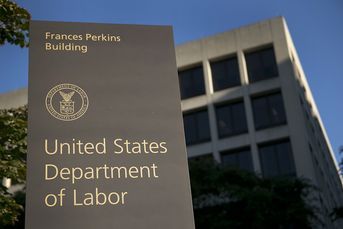Why that $6.2 billion outflow from an ESG ETF is not the end of sustainable investing

Excluding the iShares ESG Aware ETF, sustainable funds saw positive net sales so far this year, according to data from Morningstar Direct.
The second-largest ESG-themed U.S. fund has hemorrhaged nearly a third of its net assets this year, prompting speculation in the media that the outflows are a verdict on sustainable investing.
But the data show that there are some nuances to that, and that the recent redemptions could have more to do with bank failures and monetary policy than performance linked to ESG factors.
As of March 22, the iShares ESG Aware MSCI USA ETF (ESGU) had bled nearly $6.2 billion year to date. The fund held $19.6 billion at the end of 2022, making it the second biggest sustainable fund, behind the actively managed Parnassus Core Equity Fund, which was $23.9 billion at the time.
As money poured out of ESGU, another iShares ETF, the MSCI USA Quality Factor ETF (QUAL), raked in nearly as much, with $4.8 billion on March 20 alone, VettaFi head of research Todd Rosenbluth wrote late last week.
“The added flows to QUAL likely represent a further tilt toward equity risk reduction favoring large- and mid-cap stocks amid a shifting macroeconomy and the impact of the bank failures on monetary policy,” Rosenbluth said in a post on ETF Trends. “The moves into QUAL and out of ESGU are so large that this is not likely the result of individual advisors or retail investors, but rather an institutional investor or an outsourced manager supporting a wide range of advisors.”
A statement from the asset manager supported that idea but didn’t point to specific flows from one ETF to another.
“As a fiduciary, BlackRock designs models to seek to deliver on an objective defined by an advisor’s client while controlling for risk, in an efficient, cost-effective manner,” a spokesperson said in the statement. “As we rebalance our models to capture opportunities in the market, some ETFs included in BlackRock model portfolios experience inflows or outflows, driven by advisors who trade their clients’ portfolios in line with BlackRock’s models.”
While ESG-themed funds last year widely underperformed peers that were more likely to hold energy securities, overall sales data do not show a trend away from sustainable investing.
So far this year, sustainable mutual funds and ETFs had net redemptions of about $5.4 billion, with most of the outflows happening in March, when ESGU bled $5.5 billion, according to data from Morningstar Direct as of March 22. That data covered all such funds for January and February but 70% of funds for March, as some funds do not report figures until month-end.
“Excluding iShares ESG Aware MSCI USA ETF, provisional data shows that sustainable fund flows were positive over the quarter, so they held up quite well against a continuously challenging macro backdrop, with high inflation and interest rates,” Hortense Bioy, global director of sustainability research and manager research at Morningstar, said in an email.
Among all U.S. mutual funds and ETFs, Morningstar Direct data show estimated net inflows of $39.9 billion year-to-date through March 22. By comparison, U.S. funds saw net redemptions last year, the first on record in Morningstar’s data set, with $370 billion in withdrawals.
However, sustainable funds eked out slightly positive sales figures in 2022, with $3.1 billion in net money going into them.
This year through March 22 the sustainable funds with the biggest net outflows, behind ESGU, were the Invesco Floating Rate ESG Fund (-$410 million), the Parnassus Core Equity Fund (-$343 million), iShares MSCI KLD 400 Social ETF (-$338 million), iShares Global Clean Energy ETF (-$231 million) and iShares ESG Advanced Total USD Bond Market ETF (-$213 million), according to data from Morningstar Direct.
The top five sustainable funds for net sales were the iShares ESG Aware MSCI EM ETF ($477 million), BlackRock Sustainable Advantage Large Cap Core Fund ($476 million), iShares ESG U.S. Aggregate Bond ETF ($305 million), Calvert Equity Fund ($299 million) and Brown Advisory Sustainable Growth Fund ($265 million).
Learn more about reprints and licensing for this article.








